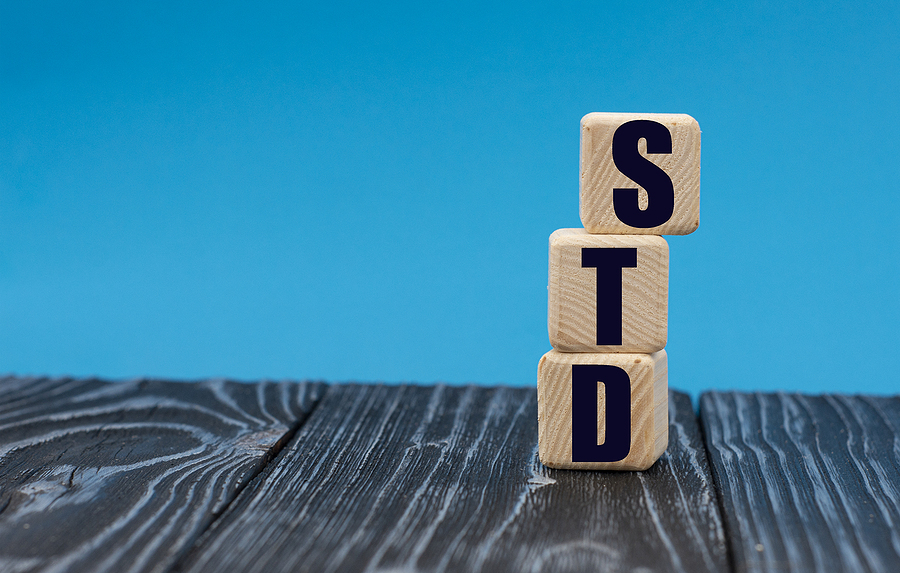Why are the over-50s at risk of STIs?
It’s not just millennials who are at risk. NHS sexual health consultant Peter Greenhouse explains how we can protect ourselves, no matter our age
According to a report by Public Health England, STIs were on the rise across all age groups pre-lockdown. The largest proportional increase was recorded in the over-65s – with cases of gonorrhoea and chlamydia rising by 42% and 24% respectively in recent years.
The rise of hook-up culture, made easy by dating apps like Grindr and Tinder, undoubtedly played a role. Porn is another undeniable factor; sex is almost always performed without a condom in online videos. Then there’s the fact that older women, back on the dating market post-divorce, may not be using condoms with new partners as they are past their fertile years.
However, while straight women might be clued up on hormonal contraception throughout their lives, few realise the gamble they’re taking by not insisting on condoms – and with more than half of men admitting to not using condoms regularly, the odds are pretty high they’ll catch something. Remember that STIs can be spread through oral sex, too.
But there’s a glimmer of hope. Experts predicted that lockdown was a ‘once-in-a-lifetime’ opportunity to drive down STIs, due to people abstaining from sex with multiple partners and self-testing at home. Whether this will have a lasting impact remains to be seen, but as social-distancing rules loosen, let’s do some safe sex housekeeping…
What are the symptoms of an STI?
The problem is, few people exhibit symptoms straight away, which is when STIs tend to be most infectious. Gonorrhoea, for example, quickly causes painful urination in men, but discharge in women is less obvious, and can be slower to appear; throat and rectal infection nearly always stays symptomless.
Syphilis (rates of which have doubled in the last decade) brings flu-like symptoms and sores on the genitals, with a later rash across the body, but can lie dormant for years. Chlamydia is often referred to as the silent STI as it’s typically symptomless, but left untreated can wreak havoc on the reproductive organs, and even remain hidden in the gut.
Why is safe sex so important?
Not all STIs are easy to treat. Gonorrhoea, once treated with a single tablet, now requires an injection, thanks to the emergence of more resistant strains.
Without the right treatment, STIs can have a serious impact on health, leading to increased risk of HIV and even cardiovascular and neurological complications.
It sounds scary, but don’t let it put you off enjoying sex, which comes with lots of physical and mental benefits. Just protect yourself properly and speak to your GP if you have any concerns.
7 tips for safe sex
1. USE A CONDOM
It’s the most important thing you can do to protect yourself from infection.
2. GET TESTED
If you’re having sex with a new partner or have had multiple partners in the past, get screened at least once a year.
3. GET TREATED
If you have symptoms, head to your nearest sexual health clinic or your GP without delay.
4. HAVE A JAB
Over-25s can still get an HPV jab privately. For more info, visit jostrust.org.uk.
5. QUIT SMOKING
It affects your body’s ability to fight infections like HPV, and is an important co-factor for cervical cancer for this reason.
6. USE LUBE
Vaginal dryness can increase your risk of contracting STIs as the tissues are more prone to tear. Progesterone-only pills and injections can be a cause, as can menopause.
7. DON’T IGNORE BV
A study in PLoS Medicine found that common vaginal infection bacterial vaginosis, is associated with an increased risk of contracting STIs, so it’s vital to get it treated.
Sex-safe condoms and lubricants are available to buy at hollandandbarrett.com. Find more great health content in healthy magazine and at healthy-magazine.co.uk
Written by Beth Gibbons
Latest posts by healthy Magazine (see all)
- The five best easy moves to stay fit at any age - June 28, 2021
- How to have glowing skin in your 50s - June 1, 2021
- Should you be eating more plant-based? - May 5, 2021
- Four things that could be causing your thinning hair - March 29, 2021
- What type of headache do you have? - March 1, 2021






















